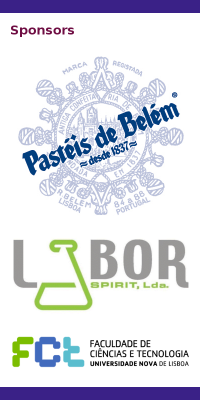|
Regina Lara
VICARTE, Research Unit “Glass and Ceramics for the Art”, Faculdade de Ciências e Tecnologia, Universidade Nova de Lisboa.Research Institute in Education, Art and History of Culture at Mackenzie Presbiterian University.
|
|
The creative process of applying grisaille in stained glass
This article introduces a reflection on a glass painting technique used since the earliest days of stained glass art, known as grisaille. The first stained glasses, the way we perceive them to this day, first appeared in the medieval period, in the huge cathedrals where biblical narratives were displayed to spread this knowledge. To create scenes illustrating miracles with landscapes, people and animals resulted in figurative images that demanded drawing expressive details, such as traces and strokes made on the glass surface, which was coloured in its own vitreous mass. In order to study the multiple applications of grisaille we intend to examine selected works by two century-long tradition studios in the creation of stained glass, the Oficina Antunes in Portugal, and the Casa Conrado, owned by Conrado Sorgenicht in Brazil, highlighting its painting techniques, especially the differences in the way the paint is placed on glass and its resulting effects.
|
|
Oksana Kondratyeva
The Worshipful Company of Glaziers and Painters of Glass, London, UK
|
|
Stained Glass Iconostasis: Fragile ‘Munich Glass’ in Ukraine
Stained glass iconostasis is a unique Arts and Crafts ecclesiastic feature, which was executed by the Königlich Bayerische Hofglasmalerei F.X. Zettler for the domesticst Nicholas Church in Kharkiv, Ukraine, in 1905. Although having lost some fragments, it has been the only survived stained glass iconostasis of the fin de siècle, incorporating ‘Munich glass’ and Orthodox iconography. After investigation of the iconostasis in situ in October 2016, the research discovers new evidences, which leads to the reconstruction of the original scheme of stained glass and to the iconography’s attribution.
|
|
Hans Meindl
Owner and President Glashütte Lamberts, Germany
|
|
New developments: Mouth blown UV protective window glass
Over the last years, the demand for UV protective glass for valuable art objects and historical furnishings has increased. UV rays damage organic material (textiles, wood, paper) but also modern adhesives which are based on organic materials. Until now the only solutions available were based on organic foil material or a coating of nanoparticles. The coating on the glass is not scratch-proof, over time the foils age and lose their effect. On this basis the author, a managing partner of a glass manufacturing company sought for a solution using glass. He developed a glass in which the UV protection is integrated and is not subject to aging. Thus, during the renovation of the Wittenberg town church, as part of the Luther Decade, the apse was to be glazed to protect the valuable Lucas Cranach Altar from UV rays. The second project was the UV protective glazing for York Minster, UK . 24 meters tall and about the size of a tennis court, the 311-panelled “Great East Window” is the largest expanse of medieval stained glass in Britain and regarded as one of the great pre-Renaissance treasures of European art. The east window of York Cathedral (GB) was fitted with a protective glazing of restauro®-UV in order to protect the adhesives used during the repairs from UV rays.
|
|
Mustafa Ağatekin
Anadolu University
|
|
Glass as an artistic element for exterior fronts in the 21st century architecture
The design of facades on the buildings in 21st century has been a quite important part of buildings designs. The discovery of new materials and the developments in technology have been the basis of generating new opportunities in architectural design sphere. Glass has been considered as one of the oldest construction materials although t a lot of new materials have been discovered, and it continues to maintain its importance and is approved as a symbol of contemporary facade in architecture. It is known that in building facade design in 21st century, glass production methods such as hot glass- blowing, casting are used for innovative facade suggestions as well as float glass production methods. Many properties of glass such as color, light transmittance, refraction and reflection of light add the qualifications of a material with almost no alternatives to glass in innovative surface design. In this study, the examples with in the sphere of architecture, where the glass is used as an artistic element on exterior facade construction and coating, are going to be analyzed and evaluated both in terms of technique and form.
|
|
Parinaz Faghihi
PhD student, Faculty of Fine Arts, University of Porto, Portugal, Member of Vicarte, Research Unit “Glass and Ceramic for the Arts”, Lisbon, Portugal
|
|
Architectural glass in the 18th to 20th centuries in Iran
In this research we study the Orsi windows as one of the significant elements in the Iranian architecture during the centuries 18th to 20th . Orsi windows reflect and refer to the Islamic and the Iranian ancient religious and the beliefs concerning the function of light in interior spaces, creating a dynamic and spiritual atmosphere for the inhabitance of a building.
|



